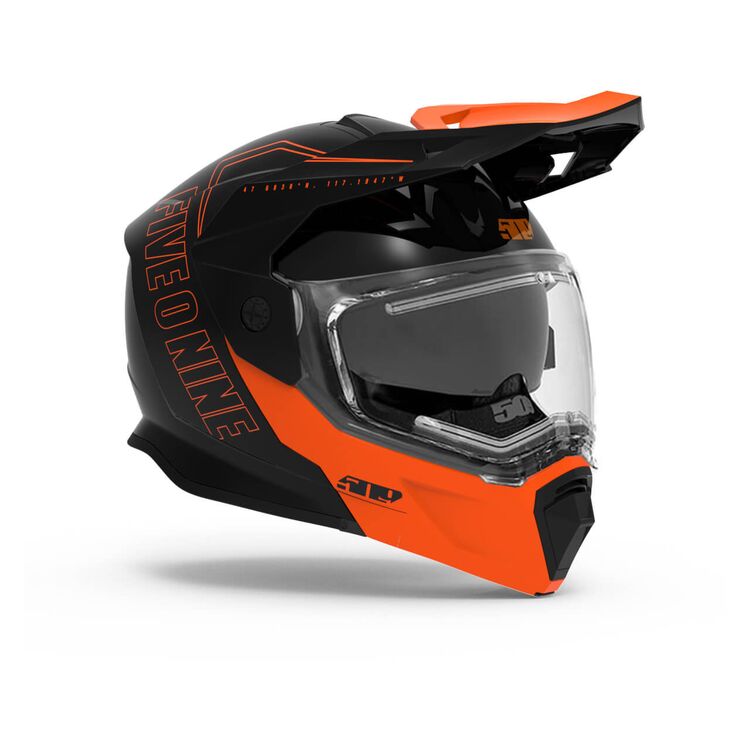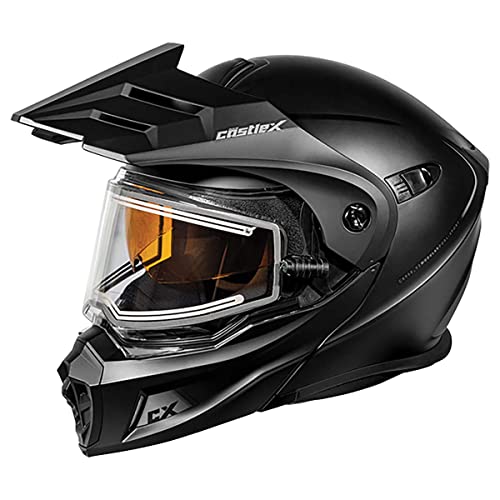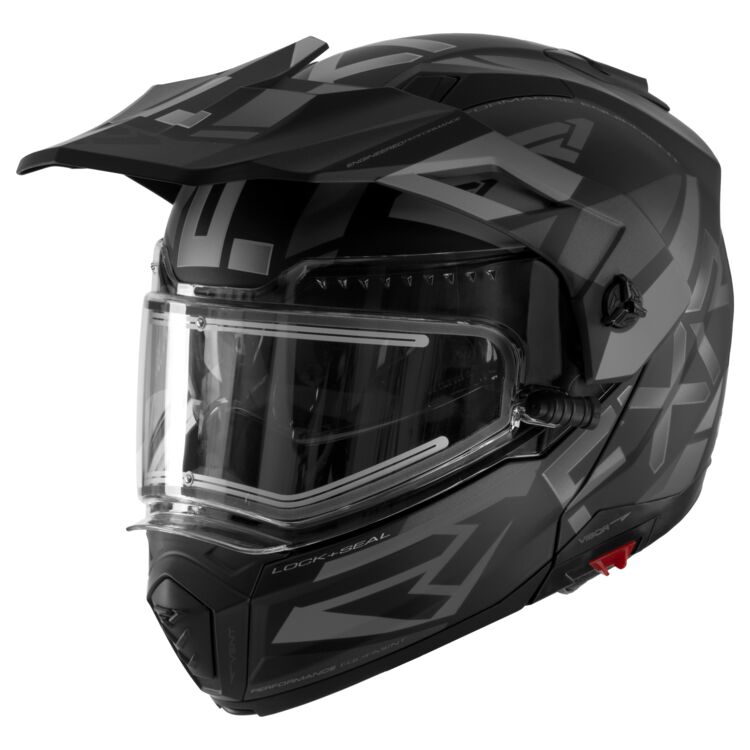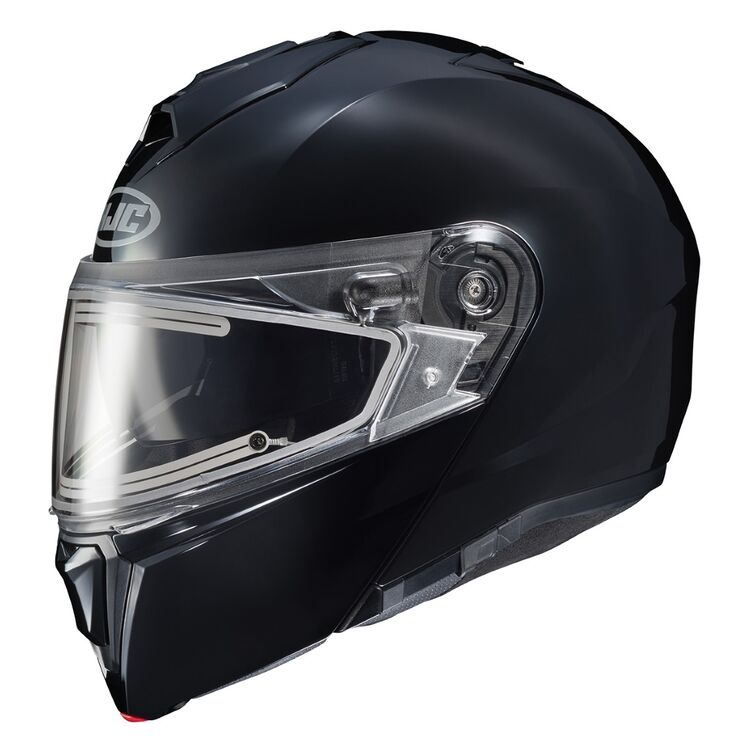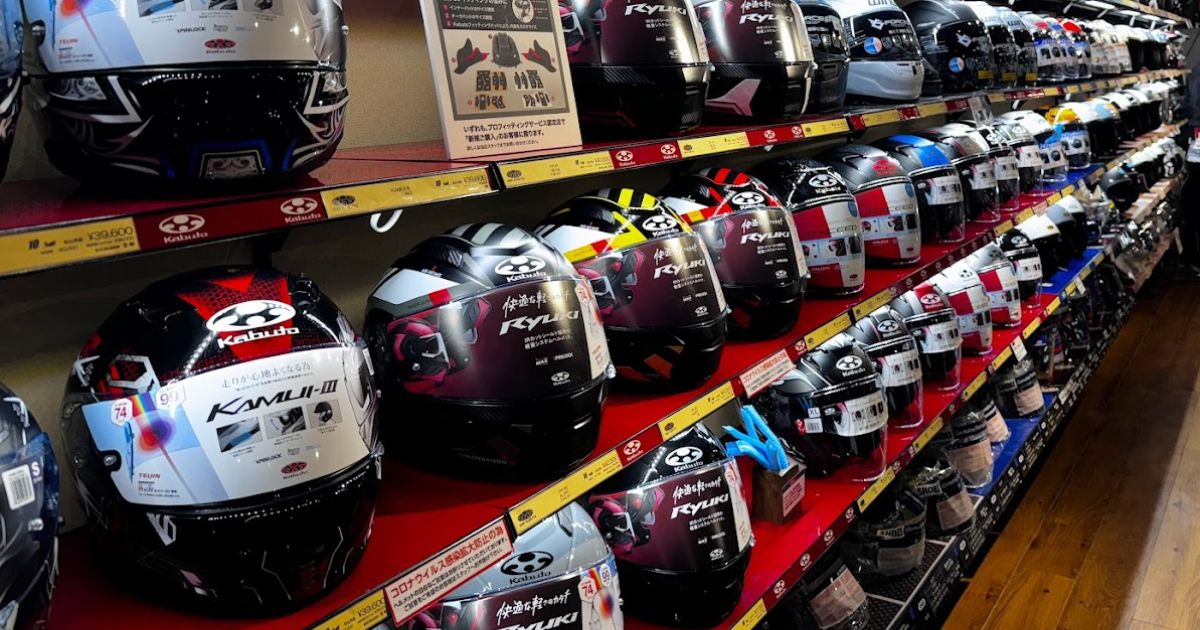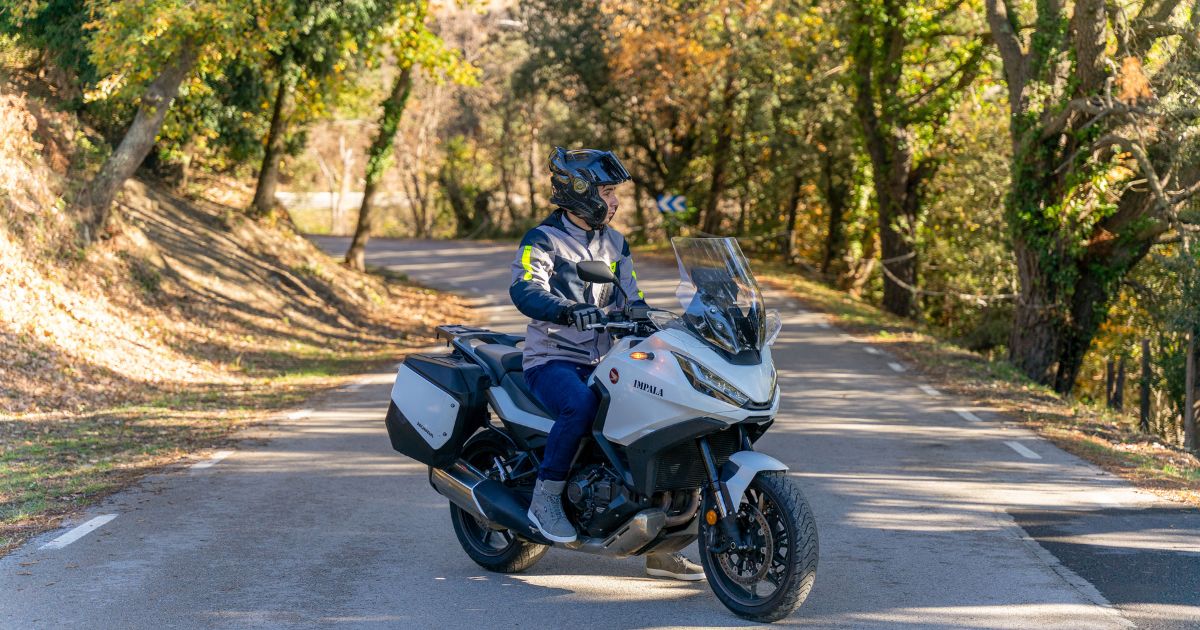
Top Snowmobile Helmets for 2025: Stay Warm on Your Ride
left for contents
The difference between an epic day on the sled and a miserable slog often boils down to the helmet on your head. At highway speeds on a frozen lake or creeping through deep powder, your brain bucket has to keep you warm, keep you breathing and keep your vision clear.
Many snowmobile helmets are still designed around outdated motorcycle shells, they rely on double‑pane shields that fog the moment you stop, and some push weight past the four‑pound mark. Even the most expensive heated shields can stop working in the cold if the wiring isn’t protected. Get the wrong lid and you’ll quickly discover that a helmet built for a dirt bike doesn’t cut it at ‑20 °C.
This guide is written for riders who want the best possible head protection without ruining a day on the sled. Below you’ll find helmets that solve common complaints such as fogged‑up shields, insufficient warmth, poor fit with prescription glasses and flimsy comms integration. We also highlight communication systems that work with these helmets so you can stay connected when exploring off‑trail.
By the time you’re done you’ll know exactly which helmet matches your riding style and budget.
Which Snowmobile Helmet Suits Your Riding Style?
Every rider is different, and the perfect lid for someone who spends hours on groomed trails isn’t necessarily right for a mountain goat smashing through bottomless powder. Here’s a quick overview of our favorite helmets and the riders they suit best:
| Riding style / scenario | Recommended helmet | Why |
|---|---|---|
| Trail & touring with heated vision | 509 Delta R4 Ignite | Heated shield, flip‑up modular design, plush lining and climate‑control vents keep your face warm and visibility clear. |
| Value‑conscious trail riders | Castle X CX950 V2 Electric | Good price, electric dual‑pane shield, adjustable ventilation and eyeglass‑friendly cheek pads. |
| Versatile crossover (trail/backcountry) | FXR Maverick X Electric | Lightweight polymer alloy shell with an electrically heated shield and integrated drop‑down sun shade. |
| Premium touring & integrated tech | Ski‑Doo Oxygen | Heated visor with remote control, eLinQ connector and noise control system; panoramic view and compatibility with prescription glasses. |
| Lightweight carbon modular | CKX Mission Carbon | Carbon‑fibre shell (~ 1580 g), AMS fog‑reduction system and retractable sun visor. |
| Backcountry & extreme ventilation | KLIM F5 | Carbon shell, 18 intake and eight exhaust vents, large eye port and moisture‑wicking liner. |
| Eyeglass wearers & commuters | HJC i90 Electric | Polycarbonate modular helmet with glasses grooves, heated shield and integrated comms pockets. |
Keep reading for detailed reviews of each helmet and the communications systems that make your rides safer and more enjoyable.
If you also need cold-weather protection for your body, check out our guide to the best snowmobile jackets for 2025.
509 Delta R4 Ignite – Modular Warmth with Ignite Heating
If you ride trails or tour across frozen lakes you’ll appreciate the Delta R4 Ignite from 509. It’s a modular helmet built specifically for snowmobile use with an electric heated shield. The standard dual‑pane visor is supplemented by 509’s Ignite heating element, which prevents frost build‑up even when you’re idling in a parking lot. Flick the large glove‑friendly button and the shield clears instantly – something many snow helmets promise but few actually deliver.
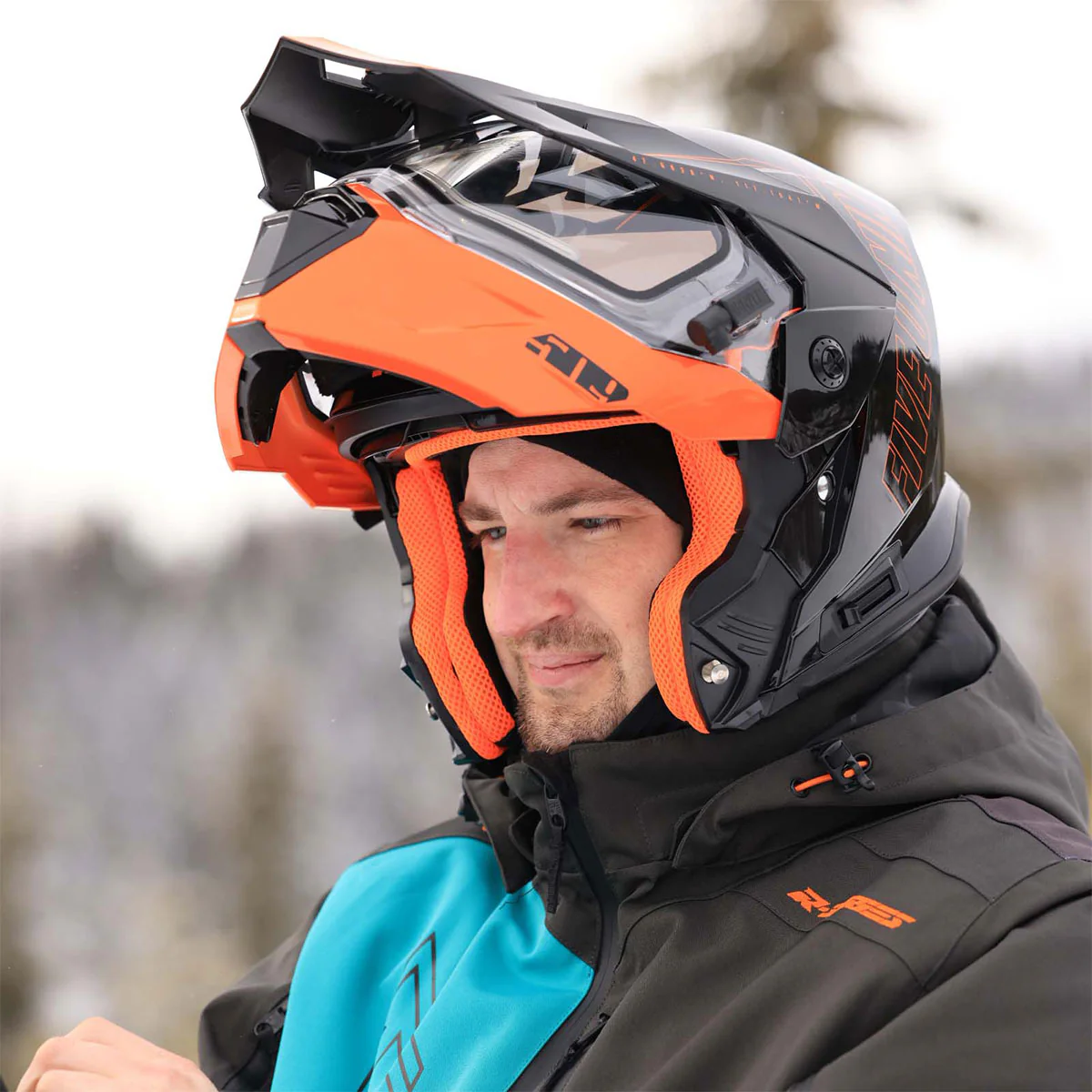
The shell is made from a lightweight poly‑alloy and comes in three riding configurations: dual‑sport (with peak and shield), full‑face and open‑face. That flexibility lets you tailor the helmet to your riding style or the weather. We like the Fidlock magnetic buckle because it snaps shut even with bulky gloves, and the moisture‑wicking liner keeps the inside dry on warmer days. A drop‑down tinted sunshield reduces glare when the sun reflects off fresh snow, and climate‑control vents allow you to dial in airflow without freezing your face.
At roughly 1,900 g (4 lb 3 oz), it’s heavier than a pure carbon helmet, but that weight translates to stability in crosswinds – useful on exposed lakes. The large eye port accommodates most goggles, and the included arctic chin curtain and breath box seal out drafts.
The only real downside is that the heating element relies on your sled’s 12‑volt power and uses a proprietary cord, so if it fails you’re left with a heavy dual‑pane shield. If you want something lighter or hate wires, the CKX Mission Carbon reviewed below offers similar warmth with less weight.
Specifically built for cold-weather riders, this modular snow helmet features an electric heated shield to prevent fog and frost while delivering a wide field of view and glove-friendly controls.
- Fog-free visibility with heated shield
- Easy one-hand use with Fidlock buckle
- Comfortable fit for glasses wearers
- Modular design adapts to any ride
- Heated shield depends on 12-volt power
- Chin area can feel cool in extreme cold
Castle X CX950 V2 Electric – Comfort and Value for Long Days
Castle X’s CX950 line has long been a favorite of budget‑minded riders, and the updated V2 Electric model takes things up a notch. It uses a tough LG polycarbonate shell that’s lighter than many entry‑level helmets and includes a dual‑density EPS liner to absorb energy. The modular chin bar is released with a single glove‑friendly button, and the oversized eye port gives you a wide field of view – crucial when looking for trail markers.

The electric dual‑pane shield plugs into your sled’s power outlet and features an anti‑fog coating, plus a power cord kit is included in the box. A breath box and cold‑weather chin curtain come standard to keep your face warm when you’re blasting down the trail. We like the amber drop‑down sun visor – the tint improves contrast in low‑light conditions without making the world too dark. If you wear glasses, you’ll appreciate the eyeglass‑friendly cheek pads and speaker pockets that leave room for frames and comms speakers.
Castle X backs this helmet with a five‑year warranty, which is generous at this price point and shows confidence in the shell’s durability. Ventilation is adjustable via vents on the chin and crown, but the helmet leans warm; that’s great for winter touring but may feel stuffy if you ride aggressively.
Because the shield relies on vehicle power, a loose connection can leave you with a foggy visor – the 509’s Ignite system is more reliable in our experience. Nevertheless, for riders on a budget or those who value comfort and warranty over exotic materials, the CX950 V2 Electric is a solid choice.
A modular snow helmet with an electric, anti-fog shield that keeps your vision clear and your face warm on long winter rides.
- Fog-free clear view with powered dual-pane shield
- Modular chin bar flips up easily for talking or breaks
- Eyeglass-friendly cheek pads and speaker pockets
- Comfortable warmth and breath box keep cold out
- Electric shield requires a power cord connection
- Ventilation may feel limited on very warm trail rides
FXR Maverick X Electric – Versatile Crossover Performer
FXR designed the Maverick X for riders who split their time between groomed trails and off‑trail exploration. The shell is a lightweight polymer alloy that helps keep the helmet’s mass down while maintaining strength. It’s one of the lightest modular helmets in its class despite including a peak to deflect roost and sun glare. That peak, combined with the heated shield, makes it a true crossover – ride with the peak for off‑trail adventures or remove it for high‑speed trail runs.
The electrically heated dual‑layer face shield keeps fog at bay even when the outside temperature plunges. It’s anti‑scratch and filters UV, and there’s a drop‑down sun shade for sunny days. FXR uses a stainless‑steel latch on the chin bar for durability and an ultra‑high lift hinge so the chin bar swings up and stays out of your line of sight when open.
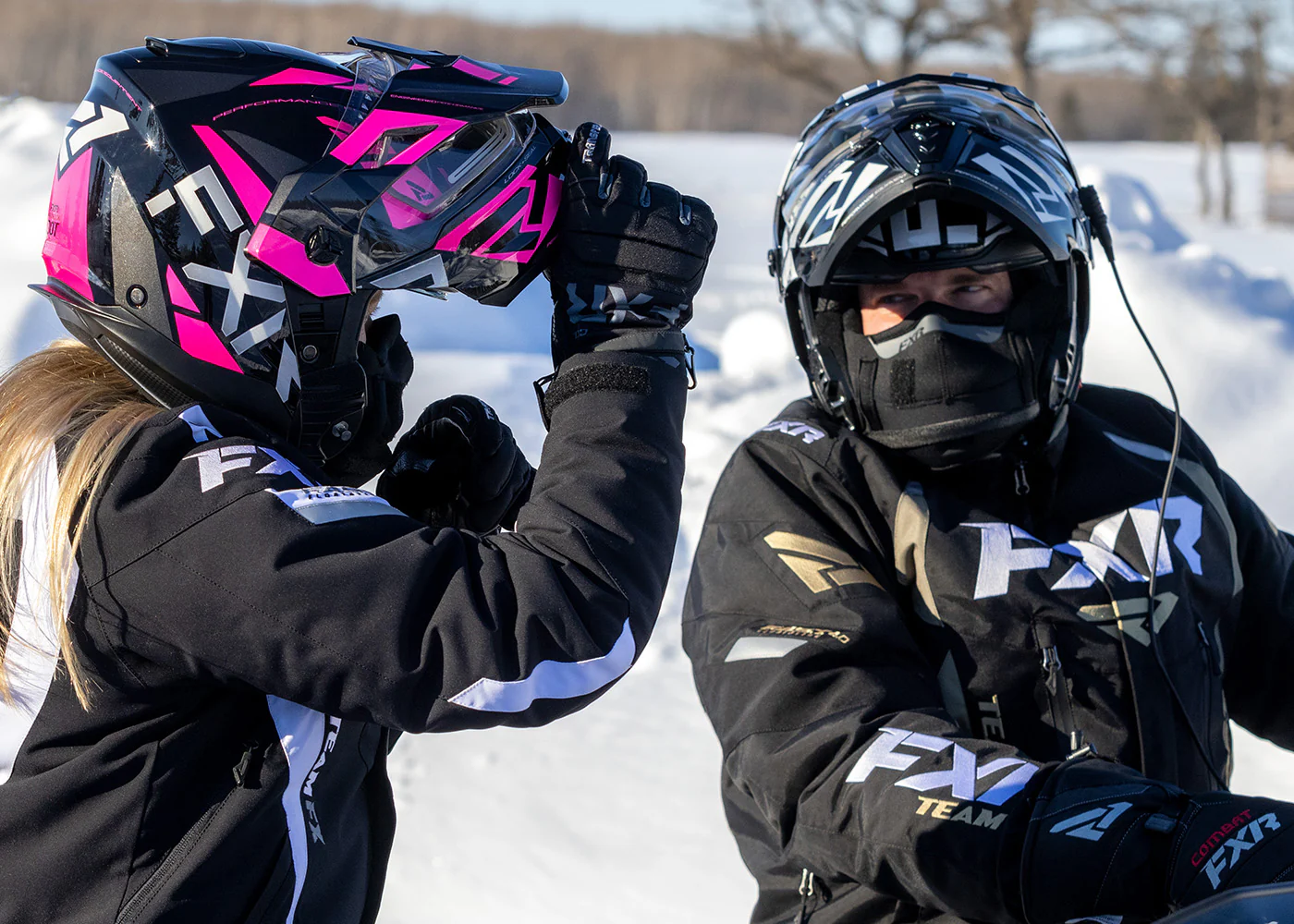
Inside you’ll find a dual‑density EPS liner and a removable moisture‑wicking comfort liner. We appreciate the high‑flow adjustable vents and integrated breath box and chin skirt that can be removed when you want more airflow.
The Maverick X is DOT and ECE certified, so you know it meets both North American and European standards. The only downside is that some sizes are often back‑ordered due to popularity; plan ahead if you need one for an upcoming trip. Riders looking for a lighter setup should consider the CKX Mission Carbon, but if you want a single helmet that can do just about everything, the Maverick X deserves a spot on your short list.
A modular helmet built for winter riding that delivers heated shield performance, dual-layer protection and trail-ready versatility in one package.
- Heated shield keeps vision fog-free
- Flip-up chin bar adds quick convenience
- Lightweight yet durable polymer shell
- Comfortable fit with wide field of view
- Slightly heavier than full-face lids
- Peak may catch wind at higher speeds
Ski‑Doo Oxygen – Premium Heated Helmet with Integrated Tech
The Ski‑Doo Oxygen is the most technologically advanced snowmobile helmet on the market. It’s the only helmet here built around an M‑FORGE composite shell, a recyclable material that helps keep weight around 1,850 g while providing exceptional impact absorption. That shell pairs with a panoramic heated visor that offers an unobstructed field of view.
Instead of the usual electric cord, Ski‑Doo uses an amplified heated visor with a pivot contact system and a remote control that lets you adjust heat levels on the fly. The eLinQ connector integrates seamlessly with Ski‑Doo snowmobiles, eliminating dangling wires and ensuring constant power.
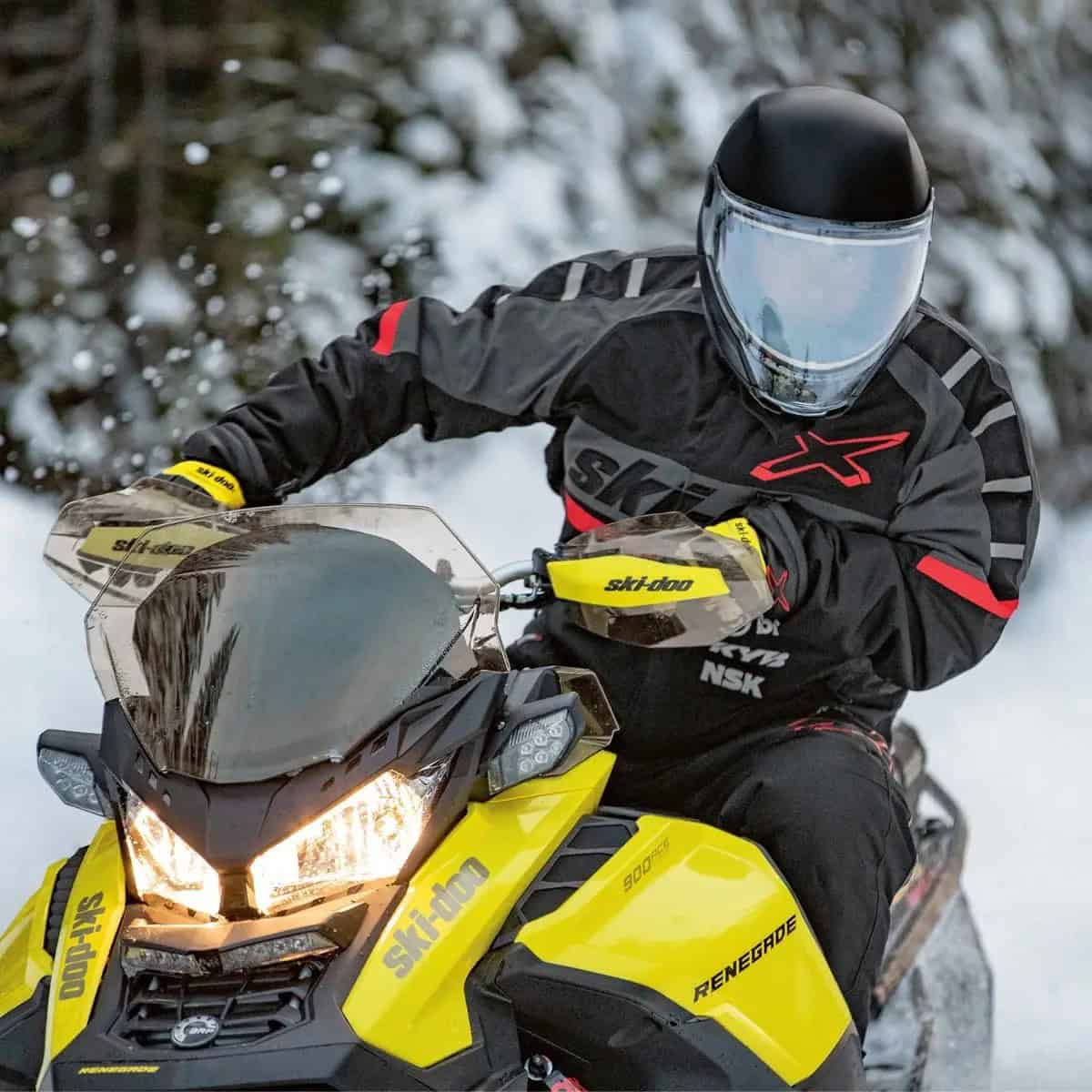
Comfort on long rides is enhanced by a Noise Control System (NCS) that reduces wind noise, while adjustable vents and a removable rear curtain and neck skirt let you fine‑tune warmth. The visor includes anti‑fog and anti‑scratch coatings, and there are options for tinted and amber sun visors. Riders who wear prescription glasses will love the generous space in the eye port and the fact that the helmet is specifically designed to accommodate eyeglasses without pressure points.
Additional touches set the Oxygen apart: front and rear LED lights improve visibility (the rear light is battery‑free), and a four‑year warranty underscores the helmet’s premium status. The integrated communication‑system compatibility means you can add Cardo or Sena units without cutting foam.
On the downside, all that technology comes at a price – the Oxygen is the most expensive helmet on this list. It’s also available only through Ski‑Doo dealers. For riders who demand the best technology and ride long distances in extreme cold, it’s worth every penny.
Stay warm, clear-headed and connected in freezing weather with this heated-visor helmet that offers a panoramic view, anti-fog tech and lightweight composite shell.
- Lightweight shell reduces neck fatigue
- Wide panoramic visor boosts visibility
- Heated visor + sun-visor chamber eliminate fog
- Eyeglass-friendly design supports riders with glasses
- Requires cord connection for heated features
- Can overheat in milder riding conditions
CKX Mission Carbon – Ultralight Carbon Modular with Fog‑fighting Technology
Carbon fibre isn’t just for motocross racers anymore. CKX built the Mission Carbon around a carbon shell that weighs roughly 1,580 g, and when fully equipped with the optional electric shield it adds only about 150 g. That makes it one of the lightest modular snowmobile helmets available. You can ride longer without neck fatigue, and the helmet feels nimble when you’re threading through trees.
Fog reduction is handled by CKX’s AMS technology. Fresh air is channeled between the shield and the helmet to evacuate moisture and keep the visor clear. An ergonomic, adjustable and removable breath guard helps guide warm air away from the shield, and there are two‑zone adjustable vents for fine control.
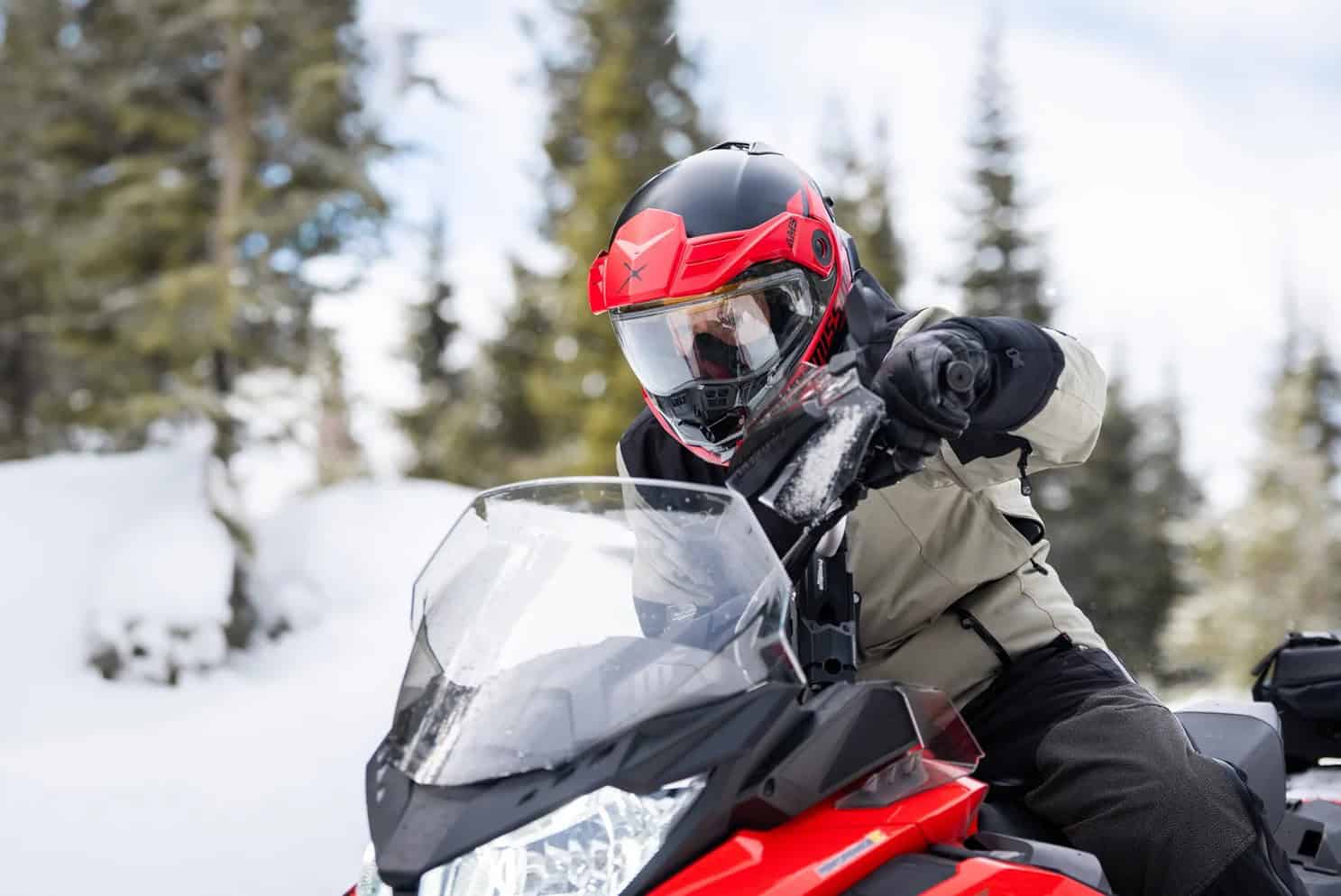
The double lens shield includes UV protection and anti‑scratch/fog coatings; you can upgrade to an electric heated version if you regularly ride in extreme cold. A retractable yellow sun visor improves contrast in flat light, and the aerodynamic, removable peak has two positions.
The ProClip quick‑release chin strap makes it easy to take the helmet on and off with gloves, and the removable liner and cheek pads are washable. DOT compliance gives peace of mind, and CKX offers multiple shell sizes and EPS densities for a better fit. Because it’s so light, the Mission Carbon can feel less substantial than heavier helmets; some riders may prefer the sturdier feel of the Delta R4 or Maverick X. However, for those prioritizing low weight without sacrificing warmth or features, the Mission Carbon is hard to beat.
This helmet combines AMS air-management and an electric visor to keep breath and fog in check, while being lightweight and trail-ready.
- Exceptional fog-free vision even when cold
- Lightweight and aerodynamic for long rides
- Wide visor and glasses-friendly fit make it versatile
- Electric version adds weight compared to simpler models
- Requires a power plug for best fog-control performance
KLIM F5 – Breathable Backcountry Protection
If your idea of fun involves technical climbs and constant movement, you need a helmet that breathes. KLIM’s F5 is the most ventilated snowmobile helmet we’ve tested. Its carbon‑fibre shell is engineered to be strong yet light, and it’s matched with a dual‑density EPS liner that exceeds ECE certification requirements. The standout feature is the venting: 18 intake and eight exhaust vents feed air through the helmet, keeping your head dry and preventing sweat from freezing. Riders who push hard will immediately notice the difference compared to a typical trail lid.
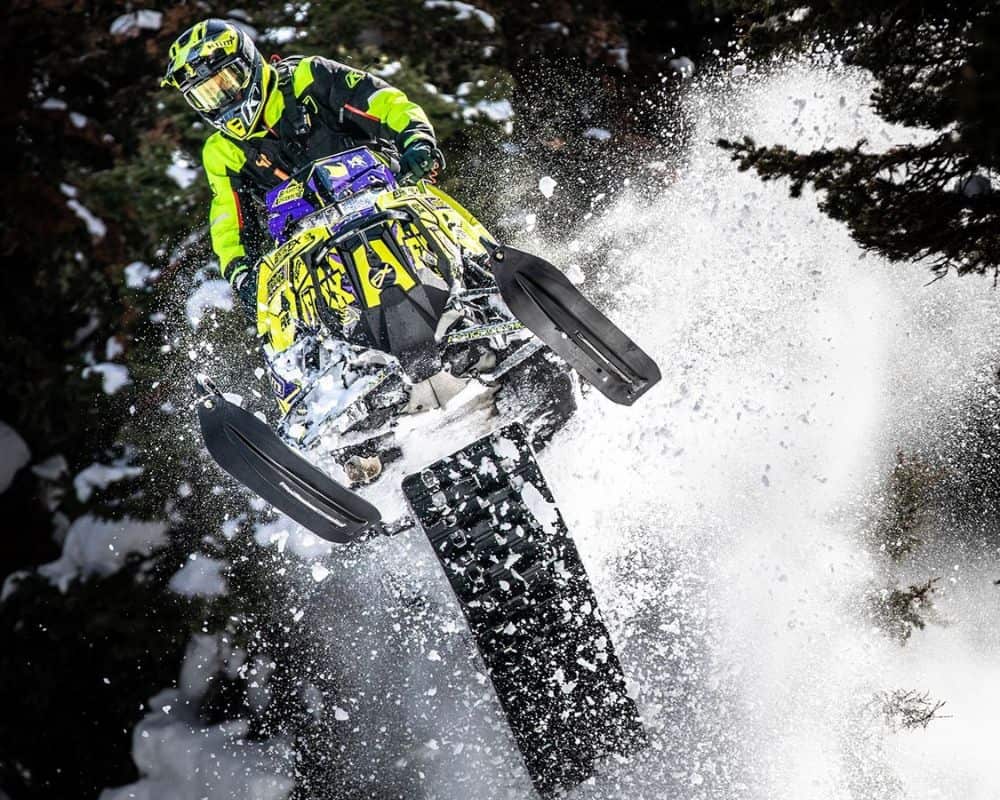
A Fid‑Lock strap closure allows quick one‑handed operation, and the large eye port accommodates oversized goggles. KLIM includes extras like a breath box, a wind‑stopper liner and an additional peak visor, so you can adapt the helmet for cold mornings or warmer afternoons. The interior uses a moisture‑wicking Drylex liner treated with an antimicrobial finish to reduce odors. Because this helmet lacks a shield, you’ll need a good pair of snow goggles; the F5 is ideal for mountain riders who prefer goggles anyway.
The F5’s focus on ventilation and low weight means it isn’t for everyone. There’s no heated shield or electrical connectivity, and you’ll need to wear a balaclava on cold trail rides. If you spend most of your time sitting behind a windshield, choose one of the modular heated helmets above. For riders who live for untracked snow and heavy breathing, the F5 is freedom in helmet form.
A premium ultra-light snow/roller helmet designed for full-day use, offering unmatched ventilation and comfort when you’re on the move or taking on technical terrain.
- Extremely lightweight for reduced neck fatigue
- Outstanding low-speed venting keeps head cool
- Wide eye-port offers excellent peripheral vision
- Magnetic Fidlock chin strap enables quick one-hand release
- Not DOT certified, suitable only for off-road/snow use
- Highly vented — may feel drafty in extreme cold without liner
HJC i90 Electric – The Glasses‑friendly Commuter
Commuter riders and anyone who wears prescription glasses know how painful it can be to fit frames inside a helmet. The HJC i90 Electric is a modular snow helmet designed with eyeglass wearers in mind. Its lightweight polycarbonate composite shell is shaped using advanced CAD technology for an aerodynamic profile and an enlarged eye port. The modular chin bar is operated by a central one‑touch button, and the helmet includes seven intake and two exhaust vents to circulate fresh air.
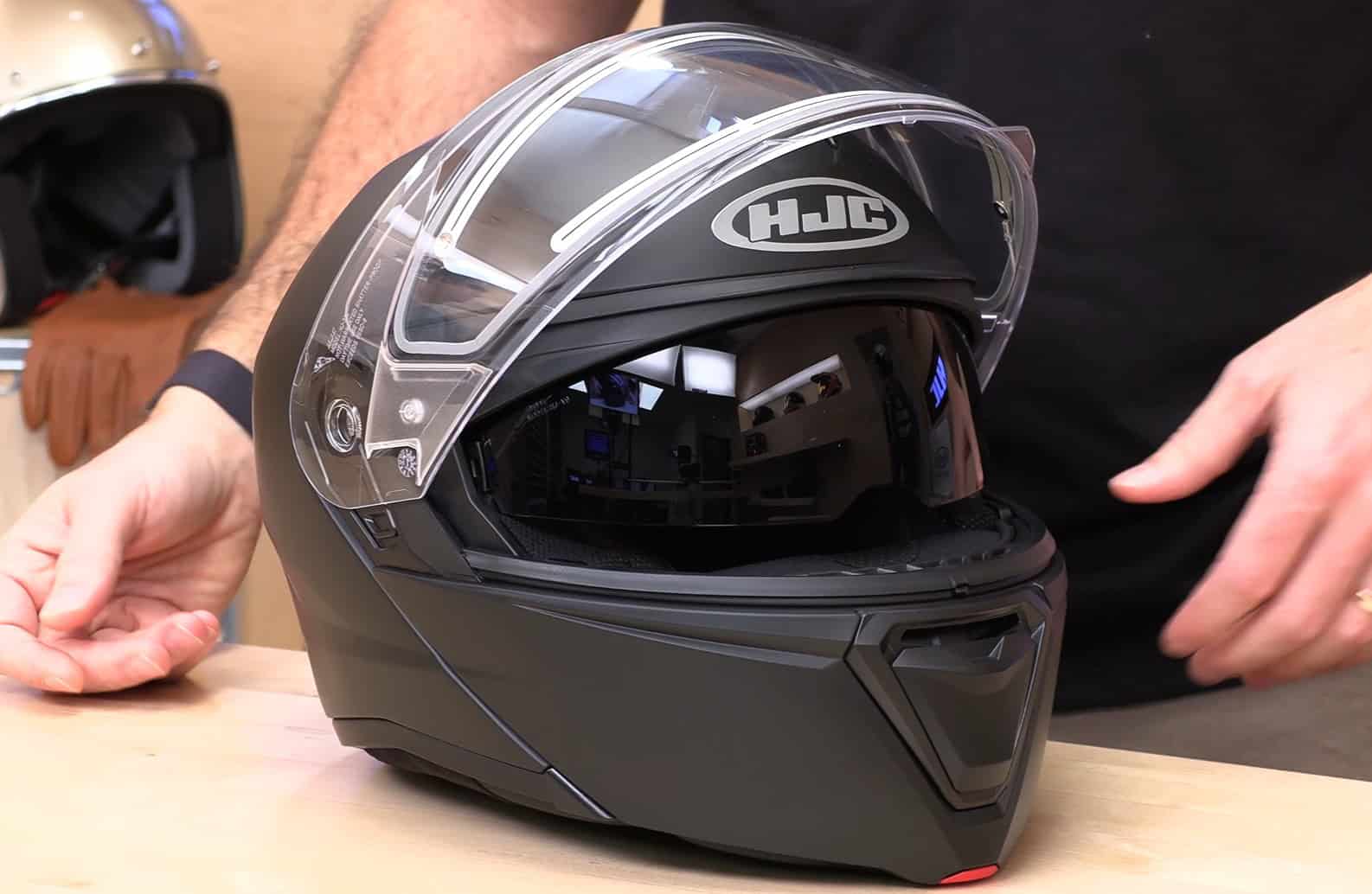
Inside you’ll find a SuperCool moisture‑wicking interior that is removable and washable, plus special grooves in the cheek pads to make room for glasses. The heated HJ‑33 face shield comes with a 12‑foot power cord to plug into your sled, and HJC’s Rapidfire replacement system lets you swap the shield without tools. There’s also a large drop‑down internal sun visor for bright days and an adjustable chin bar vent to help eliminate fog.
Bluetooth‑ready speaker pockets accommodate HJC’s SMART 10B/20B communications systems, so you can add intercom or music without modifying the liner. The helmet is DOT and ECE approved, but because it uses a traditional polycarbonate shell it’s heavier than the CKX Mission Carbon and offers less ventilation than the F5. Still, for riders who wear glasses or want a straightforward modular design at a reasonable price, the i90 Electric is a smart choice.
A versatile modular ski-helmet built for cold-weather riders, it delivers a clear ear-to-ear view, glasses-friendly fit, and integrates an electric heated shield to keep fog at bay.
- Excellent wide field of vision
- Fits glasses comfortably
- Heated shield prevents fogging
- Bluetooth-ready for comm systems
- Limited airflow in warmer temps
- Slightly heavier modular design
Communication Systems for Cold‑weather Riding
A good helmet keeps you safe; adding a communication system keeps you connected. Talking with riding partners enhances safety, and music can make long trail sections more enjoyable. Below are two systems we’ve tested that work well in cold weather and integrate easily with most of the helmets above.
Sena Snowtalk 2 – Affordable Four‑way Intercom
Sena built the Snowtalk 2 specifically for winter riders. It’s a slim Bluetooth headset that mounts inside most snow helmets and supports intercom communication for up to four riders. The range is approximately 700 m (760 yd), and you’ll get about 6.5 hours of talk time on a single charge. We like the glove‑friendly three‑button design and voice prompts that tell you when the unit is paired or running low on battery.
The system uses full‑duplex audio, so everyone can talk at once, and advanced noise control helps keep wind noise from drowning out your conversation. Pairing is handled through QR codes in the Sena Outdoor app, making setup straightforward even in the parking lot.
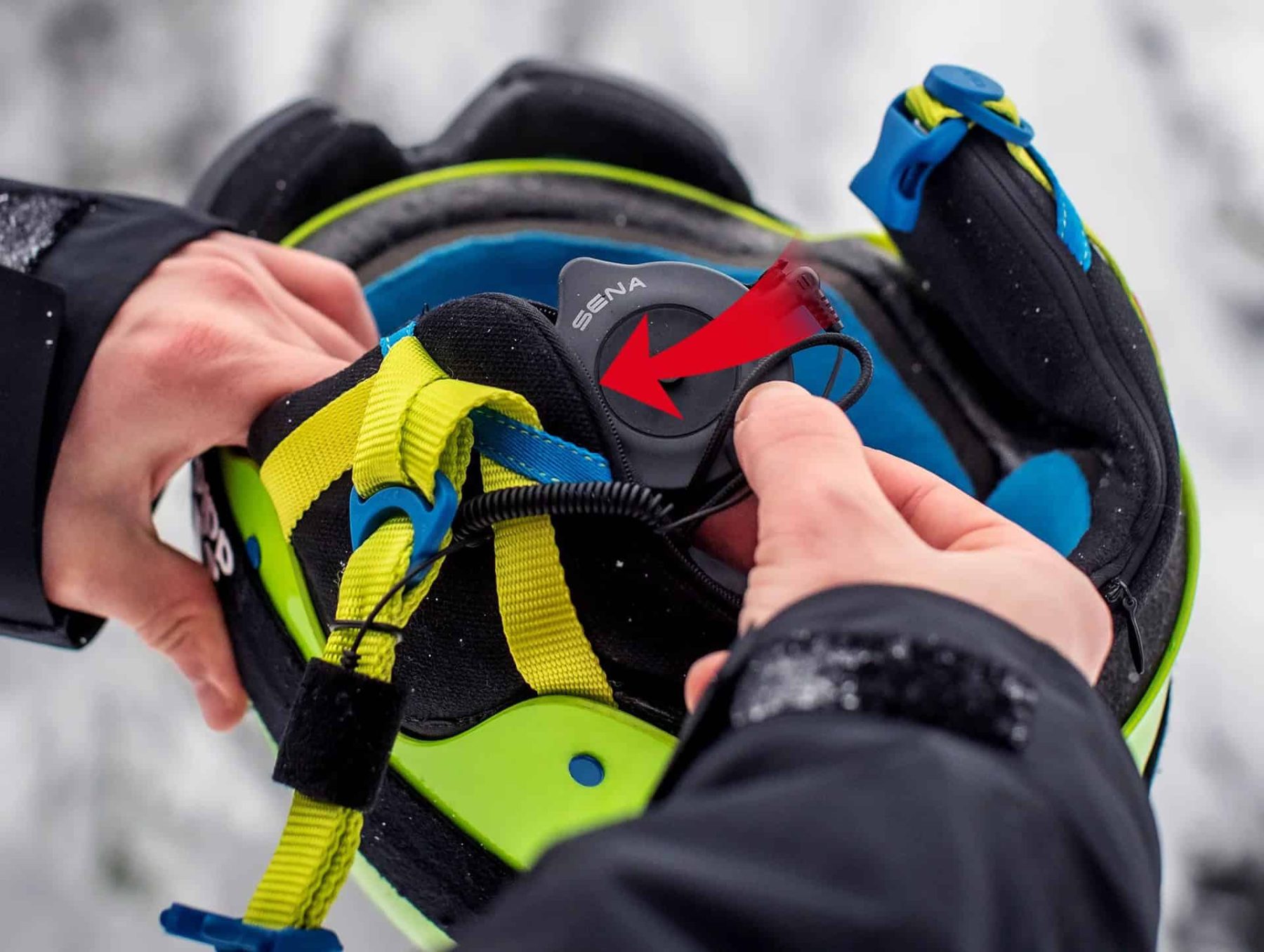
If you ride with a small group or mainly want to listen to music and occasionally talk, the Snowtalk 2 is an affordable and simple solution. It doesn’t have mesh networking, so connections aren’t as robust as the Cardo system below, but for most casual riders it gets the job done. Battery life suffers a bit in extreme cold; mount the control unit inside the helmet to shield it from wind and you’ll get close to the advertised 6.5 hours.
Stay connected on the mountain with up to four riders using Snowtalk 2 — a snow-specific Bluetooth intercom that pairs music, calls and group chat in cold conditions.
- Quick full-duplex intercom for up to 4 riders
- Glove-friendly controls and app pairing make setup easy
- Bluetooth music + phone calls through helmet speakers
- Advanced noise control helps clear wind-noise during descent
- Range drops significantly when not in open terrain
- Talk-time around 6.5 hours may not last a full day of riding
Cardo Packtalk Edge ORV – Mesh Networking for Serious Groups
For larger groups or riders who demand seamless communication, the Cardo Packtalk Edge ORV is the gold standard. It uses Cardo’s 2nd Generation Dynamic Mesh Communication (DMC) technology to connect up to 15 riders; the system automatically reconfigures when people drop in and out, so you don’t have to restart pairing. The magnetic Air Mount makes it easy to attach the unit to your helmet, and the entire system is IP67 waterproof. Cardo partnered with JBL to deliver high‑quality sound, and natural voice operation lets you control the unit without pressing buttons.

Range is roughly 1.6 km (1 mi) between units, and over‑the‑air updates mean you won’t need a computer to update firmware. Reviews on Cardo’s site note that the battery holds up well in cold weather, with one snowmobiler saying the unit lasts all day even at low temperatures. A three‑year warranty provides peace of mind. The Packtalk Edge costs more than a basic Bluetooth unit, but if you ride in groups or host tours it’s worth the investment.
The Cardo Packtalk Edge ORV delivers premium group-intercom tech, magnetic mounting and rugged performance—designed to keep riders connected from pavement to trail.
- Crisp JBL sound quality
- Quick magnetic mounting
- Stable group mesh connection
- Fully waterproof build
- Slightly bulky unit
- Overkill for solo riders
Buying Guide: How to Choose a Snowmobile Helmet
Choosing the right snowmobile helmet isn’t just about colours or style; it affects your safety, comfort and enjoyment. Here are key factors to consider:
- Safety standards: Look for helmets that meet DOT and ECE certifications. These standards ensure that the shell and liner absorb impacts effectively. The helmets reviewed above all meet or exceed at least DOT standards.
- Shell material and weight: Polycarbonate shells like the HJC i90 offer durability at a lower price, while composite or carbon shells (CKX Mission Carbon, KLIM F5) reduce weight and neck fatigue. Weight matters because heavy helmets can cause strain during long rides but may feel more stable in wind.
- Heated shield vs. double lens: Heated shields (509 Delta R4 Ignite, Castle X CX950, FXR Maverick X, Ski‑Doo Oxygen, HJC i90) use electrical power to clear frost quickly, essential for stop‑and‑go riding. Dual‑pane lenses without heaters rely on insulation and ventilation; they work well in mild conditions but may fog in extreme cold. Some helmets, like the CKX Mission Carbon, let you upgrade from a double lens to an electric one.
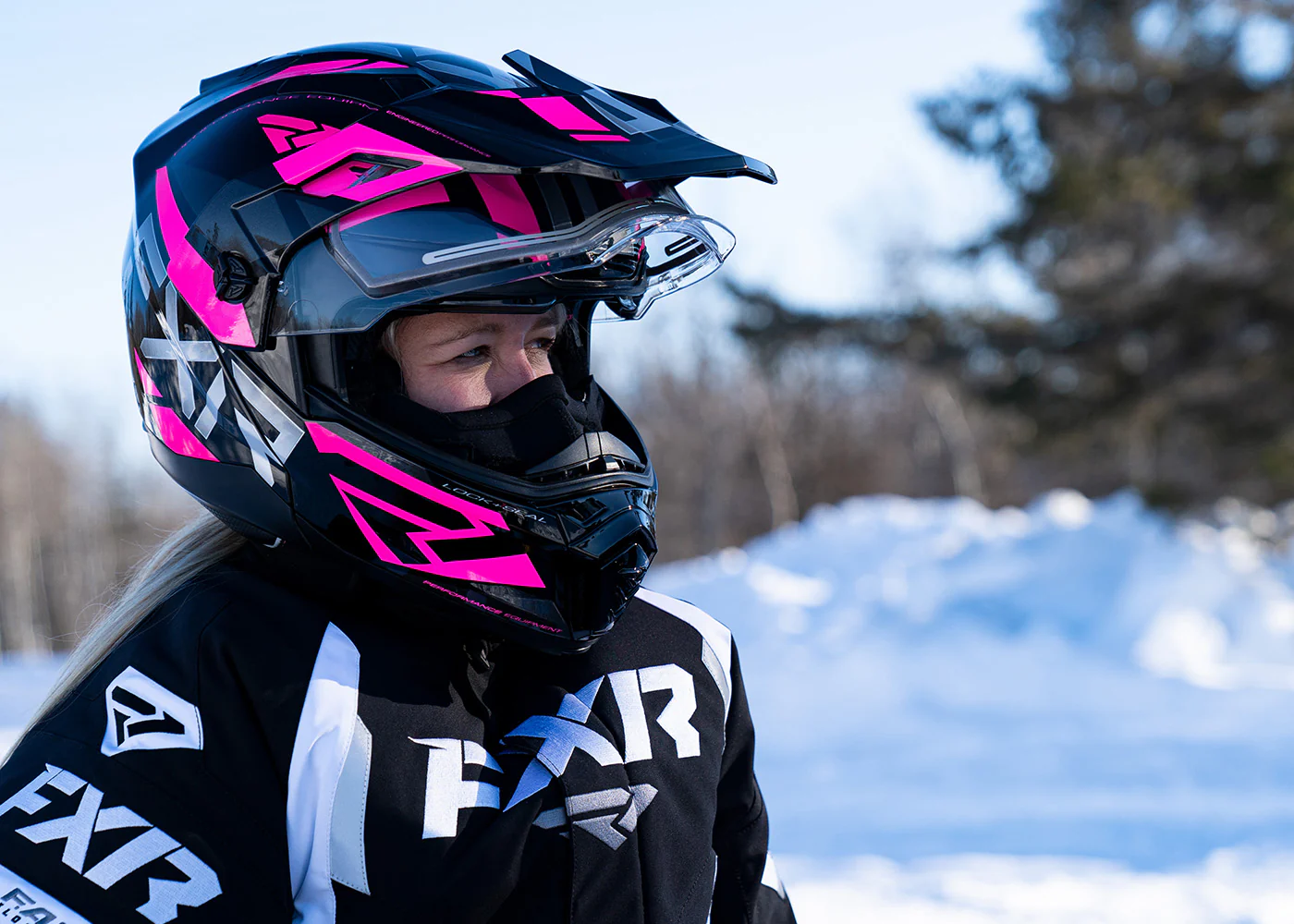
- Ventilation: Trail helmets favor warmth, while backcountry lids like the KLIM F5 emphasize airflow with many vents. Adjustable vents let you tailor airflow; look for chin vents with shutters and removable breath boxes to adapt to changing conditions.
- Modular vs. full face vs. open: Modular helmets (most on this list) allow you to flip up the chin bar to talk or drink without removing your helmet. Full‑face helmets are warmer and quieter, while open‑face or dual‑sport designs with a peak (FXR Maverick X) offer better visibility and ventilation but require goggles.
- Comfort and fit: A helmet should fit snugly without pressure points. Removable liners make cleaning easier, and features like eyeglass grooves (HJC i90) improve comfort for riders with glasses. Try multiple sizes and consider different shell sizes (CKX Mission Carbon offers several) for a custom feel.
- Communication compatibility: If you ride in groups, check whether the helmet has speaker pockets or other features to integrate comms. The Ski‑Doo Oxygen and HJC i90 have provisions for communication systems, and any of the modular helmets can work with Sena or Cardo units.
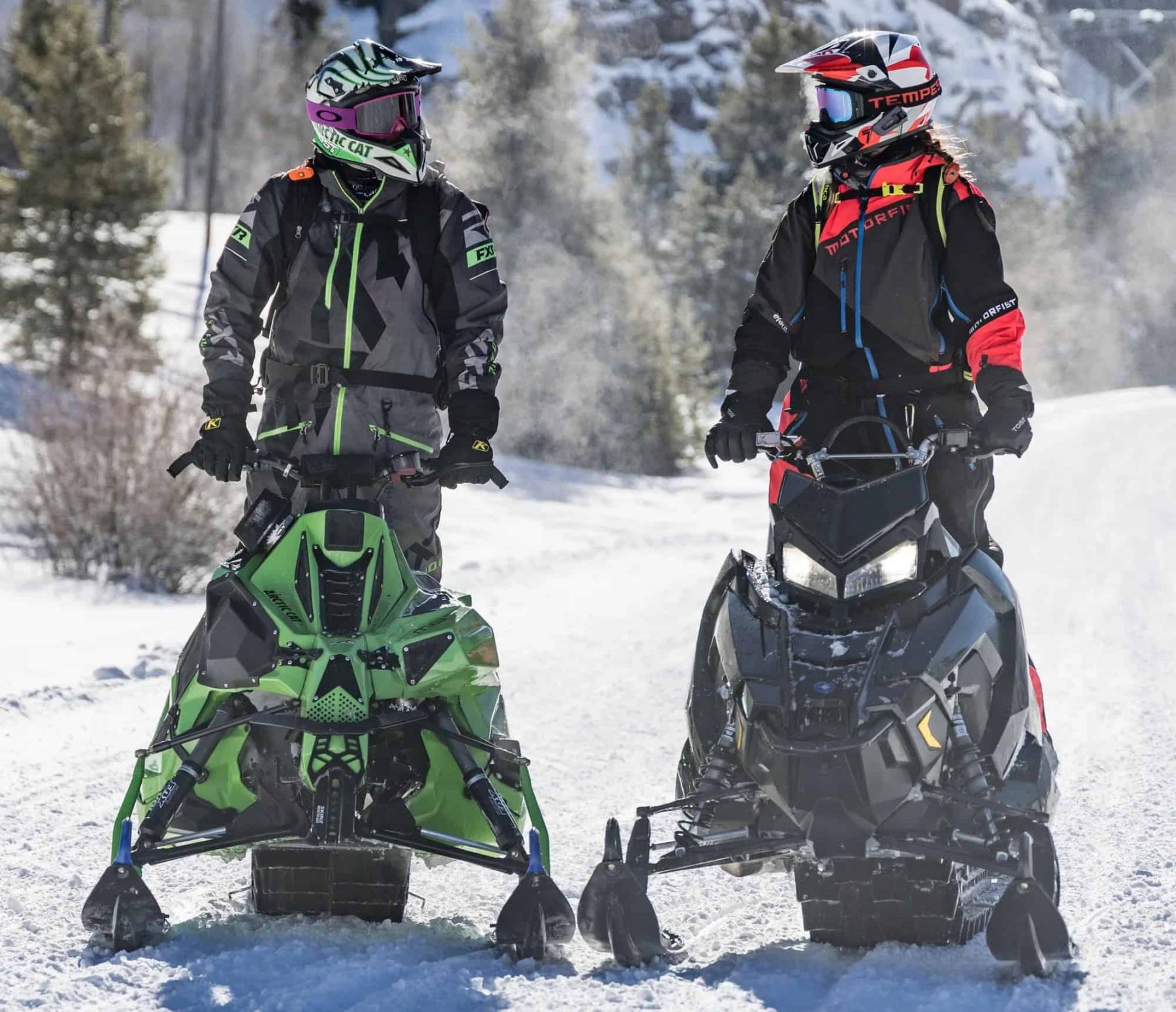
- Glasses friendly: Wide eye ports, glasses grooves and removable cheek pads are must‑haves if you wear prescription lenses. The Ski‑Doo Oxygen and HJC i90 are particularly well‑designed for glasses.
- Warranty and service: Longer warranties indicate confidence in materials and construction. Castle X offers five years, Ski‑Doo offers four years, and Cardo provides three years on the Packtalk Edge.
- Price: Determine your budget, but don’t compromise on safety or vision. A premium helmet like the Ski‑Doo Oxygen costs more upfront but may last longer and include features (integrated lights, remote‑controlled heat) that improve safety and enjoyment. If you’re on a tight budget, the Castle X CX950 or HJC i90 deliver good value with essential features.
Final Thoughts
Finding the best snowmobile helmet isn’t about chasing the newest design; it’s about matching your needs with the right features.
Trail riders who want heated convenience should lean toward the 509 Delta R4 Ignite or Castle X CX950. If you’re a crossover rider or want one helmet that does everything, the FXR Maverick X is hard to beat. For premium technology and unmatched vision, the Ski‑Doo Oxygen stands alone.
Riders who crave lightweight carbon performance will appreciate the CKX Mission Carbon, while mountain riders needing maximum ventilation should grab the KLIM F5. Finally, if you wear glasses or want an everyday modular at a reasonable price, the HJC i90 delivers comfort and convenience.
Don’t forget to pair your helmet with a communication system. A simple unit like the Sena Snowtalk 2 keeps you connected with your riding buddies, while the Cardo Packtalk Edge ORV offers mesh networking for larger groups and professional tours. Whatever you choose, invest in gear that keeps you safe, warm and smiling all winter long.
Related
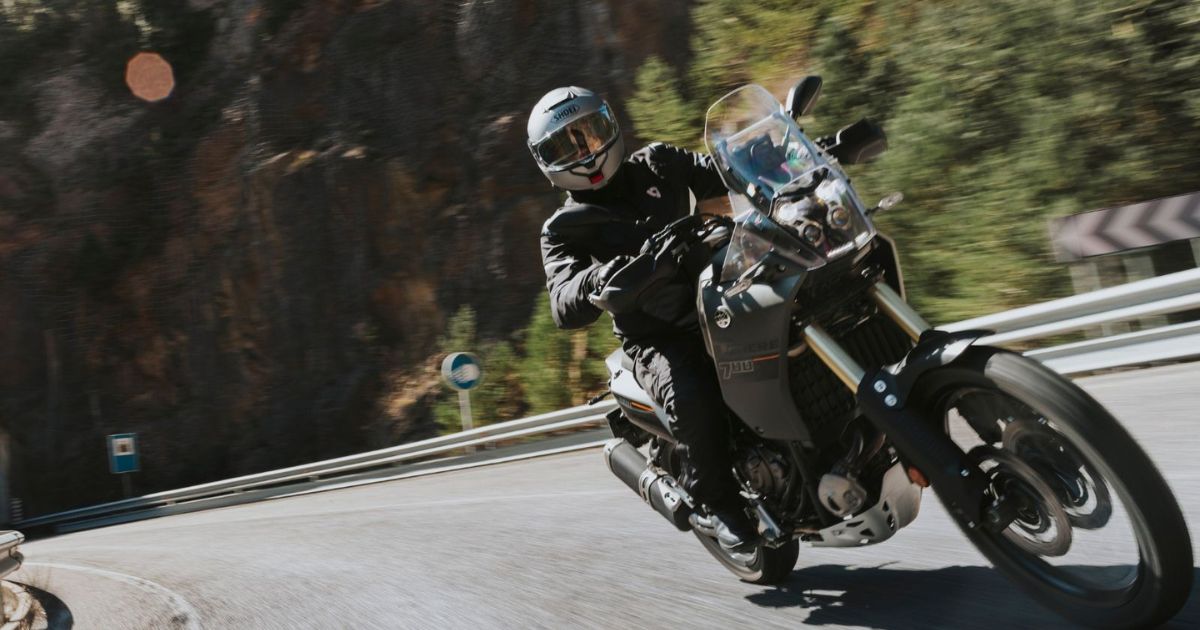
Best Quietest Modular Motorcycle Helmets: Tune Out the Wind, Not the Ride
Discover the quietest modular helmets that turn wind roar into a whisper. Protect your hearing and arrive fresh on every ride.

